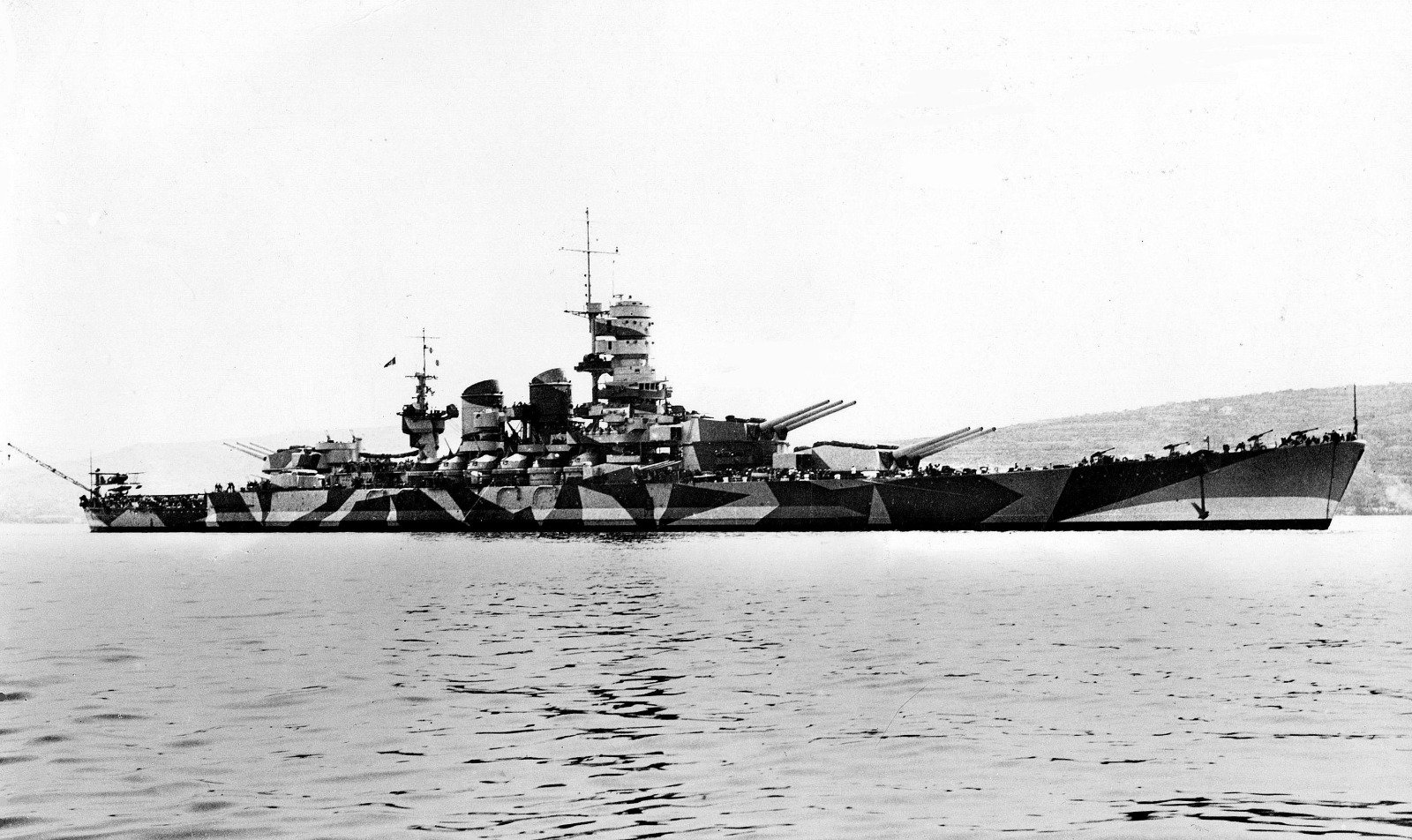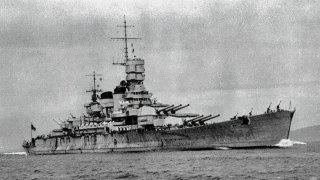Littorio-Class: Italy Built a World War II Battleship Oozing with Firepower
The first two vessels of the class, the Littorio and Vittorio Veneto, formed the backbone of the Italian fleet and were operational soon after Italy entered the Second World War in the summer of 1940. A third vessel, the Roma, was completed in June 1942, while a fourth vessel, the Impero, was still under construction when the war ended.
Nazi Germany's Bismarck and Tirpitz, along with the Imperial Japanese Navy's Yamato and Musashi, are some of the most famous battleships to see service during the Second World War. There were other Axis battleships, of course. The German Kriegsmarine operated two Scharnhorst-class battleships, while the IJN maintained a fleet of big-gun capital vessels.
Then there were the three battleships of Italy's Regia Marina.
The Kingdom of Italy had actually engaged in a naval arms race with Austria-Hungary in the years leading up to the First World War. Italy built several modern warships, but they performed poorly during the conflict.
Littorio-Class: Enter the New Class of Italian Battleships
In the 1930s, when the Kingdom of Italy was governed by the National Fascist party led by Benito Mussolini, the country underwent a modernization effort. As part of that effort, Fascist Italy sought to build a new class of battleships. While Germany and Japan sought to circumvent interwar naval treaties such as the London Naval Agreement – and later simply ignored them – Italy only developed the Littorio-class battleships in response to the French Dunkerque-class.
Built between 1934 and 1942, each ship was 787 feet long, with a beam of approximately 108 feet. The vessels displaced 45,772 long tons in a full load. Powered by eight Yarrow boilers with four shafts, the ships could reach a maximum speed of 30 knots and had a range of 3,920 nautical miles.
Armament consisted of three sets of three 371mm main guns and four sets of three 152mm guns, along with a dozen 90mm anti-aircraft guns.
The first two vessels of the class, the Littorio and Vittorio Veneto, formed the backbone of the Italian fleet and were operational soon after Italy entered the Second World War in the summer of 1940. A third vessel, the Roma, was completed in June 1942, while a fourth vessel, the Impero, was still under construction when the war ended.
Despite the promise the warships showed, their contribution to World War II was limited. Their biggest part in the war was probably the role that the Littorio played as one of the warships targeted by the British Royal Navy in its raid on Taranto on Nov. 12, 1940. This raid was studied by the IJN and used as a model for Japan’s attack on Pearl Harbor a year later. Hit twice by torpedoes, the Littorio suffered serious damage, and she only rejoined the fleet in mid-1941. She was hit by bombs on two further occasions, and later by another torpedo.
The Vittorio Veneto was also twice damaged by torpedoes in 1941, and by bombs in 1943. Along with the Roma, all were damaged in a series of Allied air attacks while in harbor at La Spezia. After the armistice with the Allies, the Littorio was renamed Italia and, while damaged en route to Malta, the ship did make it to that Mediterranean island, where she was interned along with the Vittorio Veneto. The two battleships were allocated to the United States and the United Kingdom as part of Italy's war reparations, but they were eventually sold for scrap.
The Roma suffered an even worse fate. While her capabilities were never fully tested in combat – and she made just 20 sorties during her 15 months in service – she was sunk by aircraft a day after the Sept. 9, 1943 armistice that brought about the downfall of Mussolini.
However, it wasn't Allied aircraft that sunk her.
The Italian fleet, under the command of Admiral Carlo Bergamini on the Roma, had been scheduled to sail towards Salerno to attack Allied ships during their invasion of Sicily. With the sudden surrender, plans changed. Bergamini planned to sail to Sardinia to join Italian King Victor Emmanuel III, who was setting up a "free government" that was expected to be friendly to the Allies.
After arriving in Sardinia, the Italian fleet then set sail for Malta. But the Roma never made it.

As the battleship headed out to sea, the German Luftwaffe sent Dornier Do 2017s armed with Fritz X radio-controlled bombs to destroy the majestic vessel. The squadron of bombers found its target in the Strait of Bonifacio between Italian-controlled Sardinia and French Corsica. Scoring several direct hits, the bombers crippled the Italian battleship, which capsized and broke in two, sinking in just minutes. Of the nearly 1,900 sailors who served on the Roma, along with 200 men from Bergamini's staff, fewer than 600 survived. It was the greatest loss of life on an Italian warship during the Second World War.
The wreck of the vessel was found in June 2012, about 19 miles off the northern coast of Sardinia.
About the Author
Peter Suciu is a Michigan-based writer who has contributed to more than four dozen magazines, newspapers and websites. He regularly writes about military hardware, firearms history, cybersecurity and international affairs. Peter is also a Contributing Writer for Forbes. You can follow him on Twitter: @PeterSuciu.
All image are Creative Commons.


